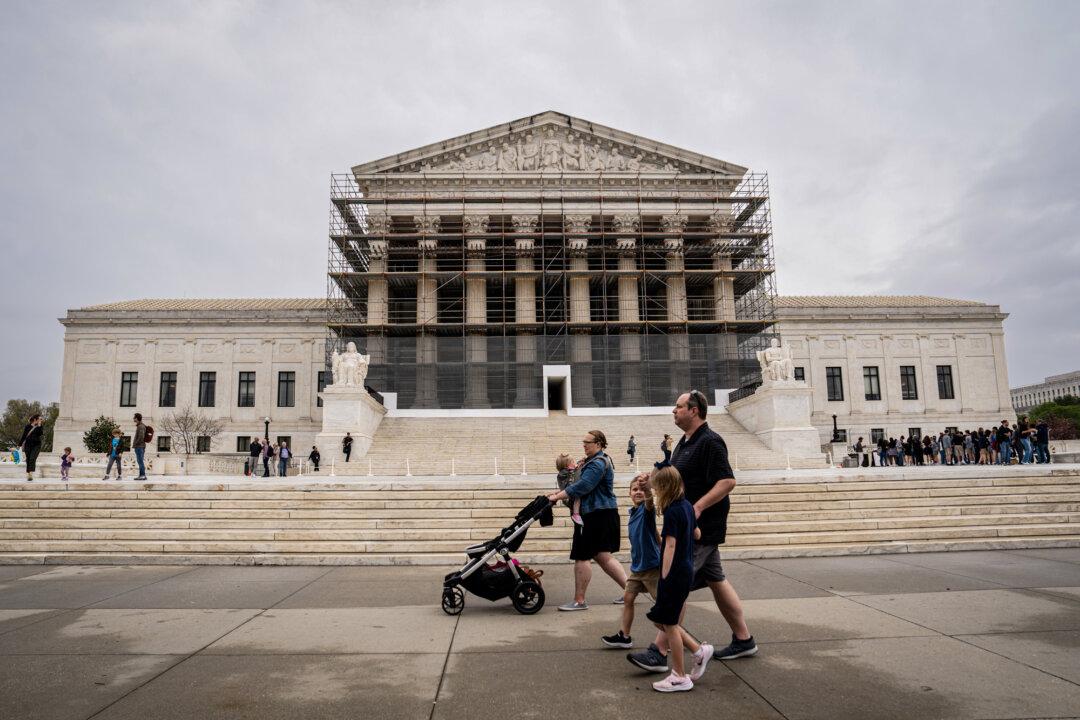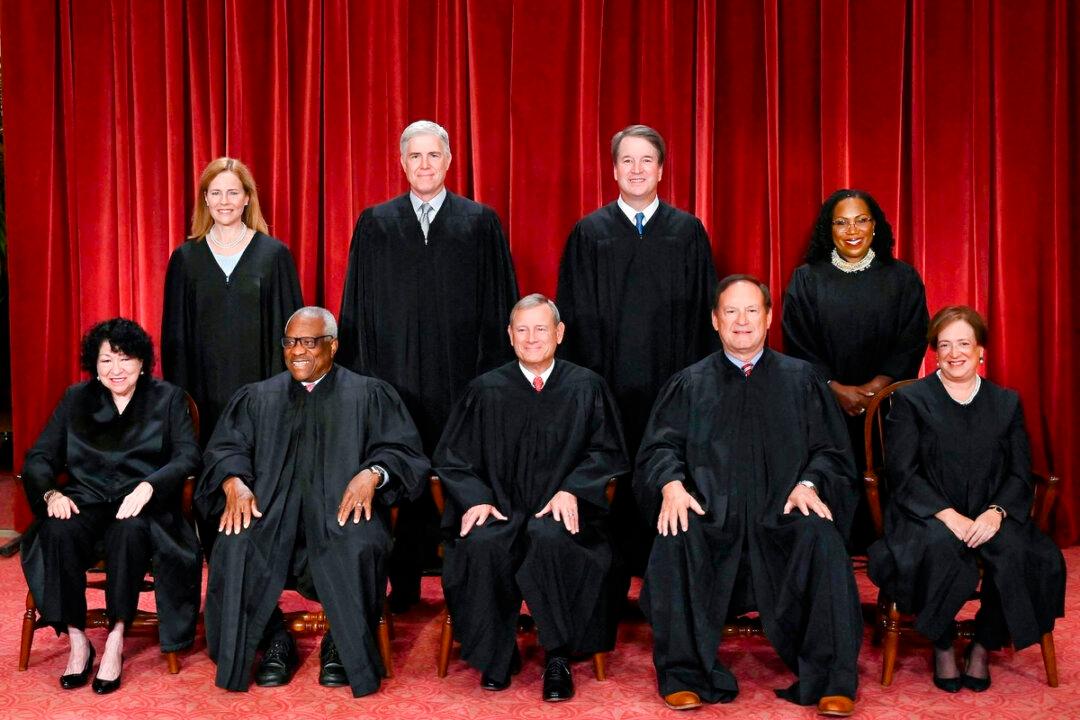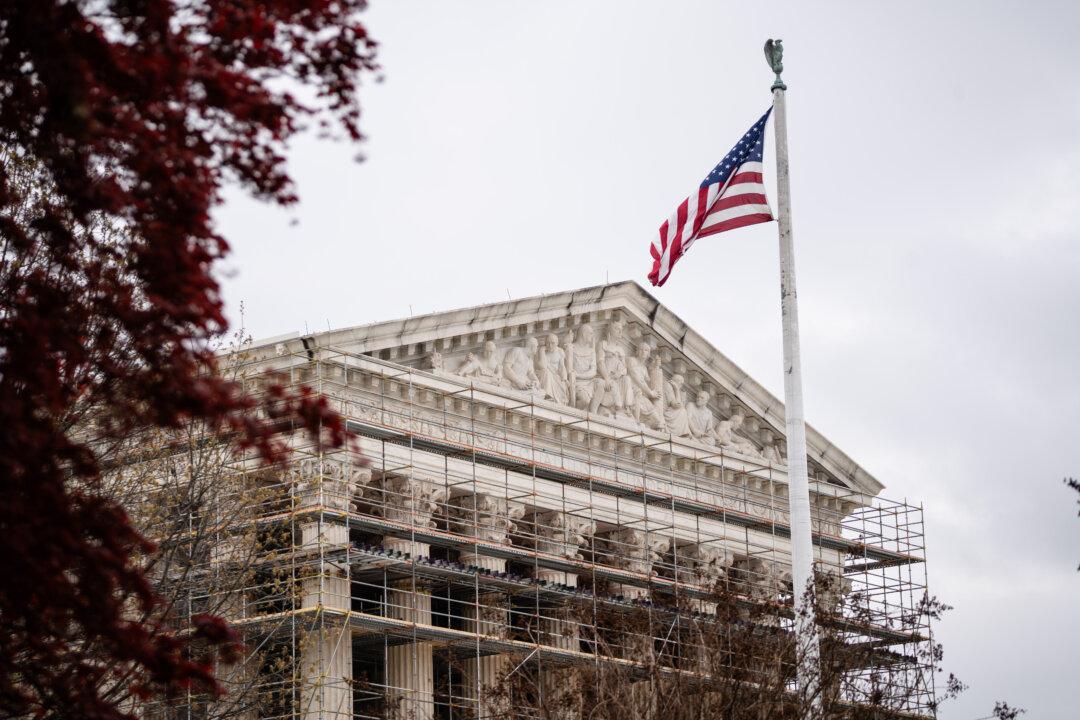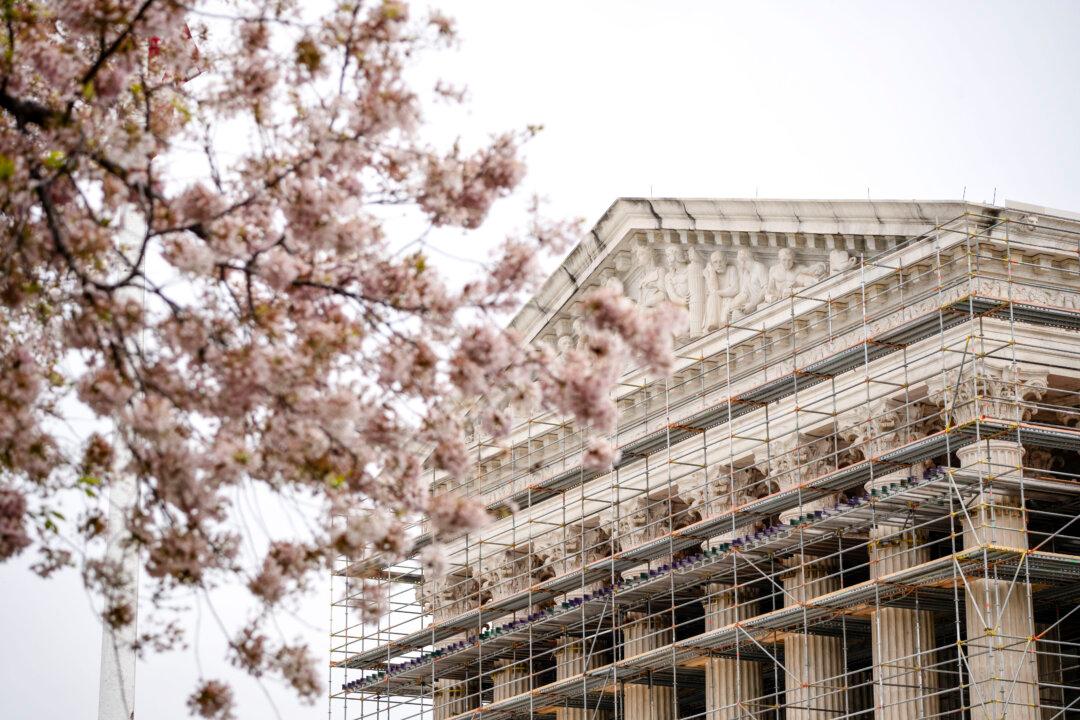The U.S. Supreme Court on April 22 withdrew its April 10 order temporarily preventing Ohio voters who support repealing the qualified immunity rule from gathering signatures to place the issue on a future state ballot.
Three justices dissented, indicating they would not have withdrawn the order.
Qualified immunity, a rule created by the courts, shields government officials, including police officers, from individual liability unless the wrongdoer violated a clearly established right. Civil libertarians have become increasingly critical of qualified immunity in recent years, saying it allows government officials to escape liability for sometimes egregious wrongdoing.
Kavanaugh, who oversees emergency appeals from Ohio, directed the respondents—voters Cynthia Brown, Carlos Buford, and Jenny Sue Rowe—who have asked Yost several times to certify proposed ballot language, to file a response with the Supreme Court by April 16.
Justices Kavanaugh, Clarence Thomas, and Samuel Alito dissented and said they would have granted Yost’s request to freeze the district court order. They did not explain why.
In March 2024, Yost reviewed the voters’ initiative summary and concluded that it “was not a fair and truthful representation of their proposed amendment.” The summary was rejected “because it repeated misstatements and omissions that the Attorney General had identified in previously rejected summaries,” the application said.
Yost’s various rejections of the summaries the voters presented to him “reached a level of hypercorrectness which went beyond ensuring that citizens could ascertain what they were being asked to support,” the judge wrote.
“The Attorney General, one might say, has played the role of an antagonistic copy editor, striking [the voters’] work on technical grounds,” Graham wrote.
The Sixth Circuit’s ruling conflicts with decisions made by the Eighth, Tenth, and District of Columbia Circuits, according to Yost’s application.
Without the Supreme Court’s “immediate intervention, the Attorney General will need to comply with the preliminary injunction and certify the plaintiffs’ summary language,” the application said.
“If left in place, the injunction will irreparably harm Ohio. That injunction alters Ohio’s near century-old process for amending its own Constitution, even though the federal Constitution does not require such a process. It is hard to envision a greater affront to Ohio’s sovereignty than that.”
The fact that Yost has failed “to identify any irreparable harm justifying his demand for emergency relief is reason alone to deny the application,” the brief stated
Meanwhile, the Sixth Circuit has scheduled expenditure briefing in the case “to ensure that its decision is rendered well before ballots are printed for the November 2025 election,” the brief stated.
“After four years of delay due to Yost’s repeated summary rejections, [the voters] will once again be unable to circulate their petitions using their preferred summaries and unable to attempt to meet the July signature collection deadline for placing their proposed amendments on the ballot for November’s general election,” the brief stated.
The voters urged the Supreme Court to vacate the April 10 administrative stay because “there will be no way to unwind this injury if [the voters] ultimately prevail on their challenge—at best, they will be able to try for the November 2026 election.”







